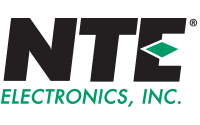
NTE Electronics, Inc.
NTE Electronics, Inc. is a prominent manufacturer and supplier of electronic components and accessories. With a history spanning over 40 years, the company has established itself as a trusted provider of high-quality products in the electronics industry. NTE offers a comprehensive range of electronic components, including semiconductors, resistors, capacitors, switches, relays, connectors, and more. These components are widely used in various applications, such as automotive, industrial, consumer electronics, and telecommunications. NTE focuses on delivering reliable and innovative solutions to meet the evolving needs of its customers. The company's commitment to quality is evident through its rigorous testing procedures and compliance with industry standards. NTE also offers value-added services like custom manufacturing, engineering support, and inventory management solutions to assist customers in optimizing their supply chain. With a global distribution network, NTE ensures efficient and timely delivery of its products worldwide. Overall, NTE Electronics, Inc. is recognized for its extensive product portfolio, exceptional quality, and customer-centric approach, making it a preferred choice for electronic components among professionals and hobbyists alike.
Signal Conditioners and Isolators
Results:
Results remaining:0
Applied Filters:
NTE Electronics, Inc.
No data |
About Signal Conditioners and Isolators
Signal conditioners and isolators are electronic devices used in industrial applications to enhance the performance and safety of measurement systems.
Signal Conditioners: Signal conditioners are used to convert signals from one level or type to another, typically for sensor measurements. These devices help to improve the accuracy and reliability of the measurement system by amplifying, filtering, or linearizing the signals. Signal conditioners can be used with various types of sensors, such as thermocouples, RTDs, strain gauges, and pressure transducers.
Signal conditioners can be categorized based on various parameters, such as input type, output type, isolation voltage, and additional features. Input types could include voltage, current, or resistance, while output types could be voltage, current, or frequency. Isolation voltage refers to the level of electrical isolation between the input and output circuits. Additional features could include surge protection, signal inversion, or programmable settings.
Isolators: Isolators are devices that separate or isolate one circuit from another in regard to power. They help to prevent ground loops, reduce noise, and provide electrical isolation between different parts of a system. Isolators can be passive or active, depending on whether they require an external power supply.
Isolators can be categorized into various types, such as isolation amplifiers, passive isolators, and signal conditioners. Isolation amplifiers use transformer or optical techniques to provide galvanic isolation between different circuits. Passive isolators, on the other hand, rely on magnetic or capacitive coupling to provide isolation. Signal conditioners can also act as isolators, providing electrical isolation between the input and output circuits.
Isolators can also be defined by various parameters, such as input voltage range, output voltage range, isolation voltage, and common mode rejection ratio (CMRR). Input voltage range refers to the range of voltages that can be applied to the input circuit, while the output voltage range refers to the range of voltages that can be obtained from the output circuit. The isolation voltage indicates the level of electrical isolation provided by the isolator, while CMRR represents the ability of the isolator to reject common-mode signals.
In summary, signal conditioners and isolators are electronic devices used in industrial applications to improve the accuracy, reliability, and safety of measurement systems. Signal conditioners convert signals from one level or type to another, while isolators provide electrical isolation between different parts of a system. These devices can be categorized based on various parameters, such as input type, output type, isolation voltage, and extra features, and are critical components in many industrial applications.
